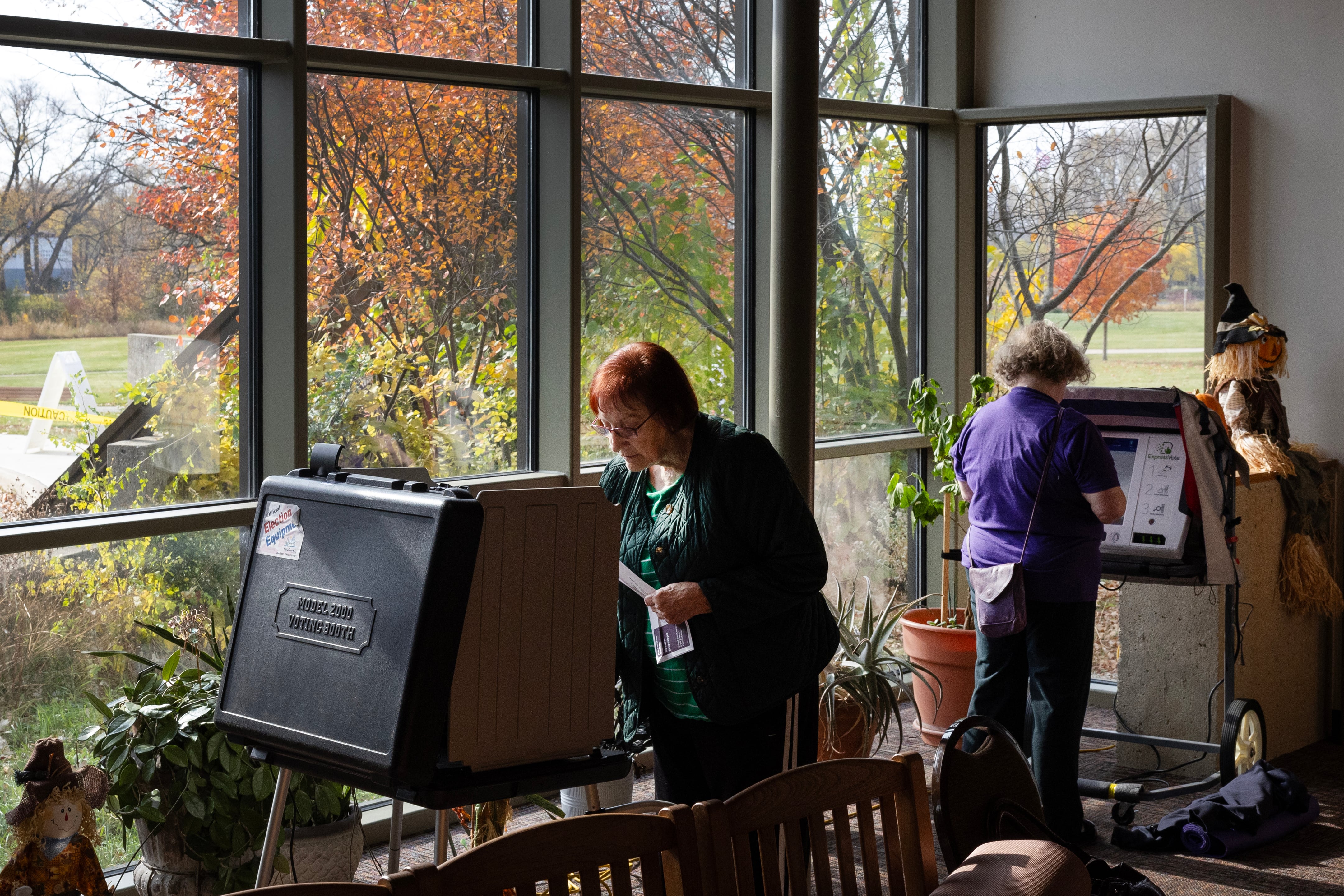Votebeat is a nonprofit news organization reporting on voting access and election administration across the U.S. Sign up for Votebeat Wisconsin’s free newsletter here.
Wisconsin’s early voting period finished Sunday, and a couple of things are clear: Voting by absentee ballot, which spiked during the COVID-19 pandemic, remains very popular, and Republicans are coming around to it despite mixed messages from party leaders.
As of Nov. 4, a day out from the election, voters cast and returned over 1.5 million absentee ballots, including nearly 950,000 cast at early voting sites. Ballots are still arriving by mail — the deadline for them to reach clerk’s offices is 8 p.m. on Election Day — but already, the total number of returned absentee ballots exceeds the total from the 2008, 2012, and 2016 presidential elections.
“Clerks were a little surprised by turnout,” Wisconsin Elections Commission Administrator Meagan Wolfe said on Friday. “Everything still went really smoothly, but I think our local election officials were surprised to see the volume of in-person absentee.”
The volume was so high, Wolfe said, that the commission bought extra absentee ballot return envelopes in case municipalities ran out. None had run out as of Friday, she said.
Republican areas coming around to absentee voting
Statewide, the total number of returned ballots is about 20% lower than it was at this point in 2020, when COVID-19 pushed voters to rely on mail voting far more than usual.
As of Monday, no county had received more returned ballots than it had at this point in the 2020 election, but the six counties closest to their 2020 levels — Washington, Adams, Waukesha, Ozaukee, Florence, and Walworth — have Republican majorities.
In Walworth County, a southern county with just over 100,000 residents, county and municipal election staff anticipated an embrace of early voting, but “I don’t think we thought it was going to be the volume that it is,” County Clerk Susi Pike said. “It’s a lot different than any other election, for sure.”
One municipality in Walworth County that typically had early in-person voting only by appointment had open early-voting hours this time around, Pike said.
Voters like the availability of in-person early voting, Pike said, because it provides more flexibility and reduces the likelihood of people not being able to vote if, for example, weather is bad on Election Day.
The state doesn’t track the partisan breakdown of the early voting data, but polling shows a growing Republican embrace of voting before Election Day — at least, some versions of it.
Among likely voters in Wisconsin who said they would vote early in person, 52% support Donald Trump while 47% support Kamala Harris, a Marquette Law School Poll released Oct. 30 showed. Among those who planned to vote by mail, 70% support Harris, while 30% support Trump.
The percentage of Republicans voting early by mail and in person has increased since the last presidential election.
In 2020, 78% of Republicans planned to vote on Election Day, while 12% planned to cast a ballot early in person and 7% planned to vote by mail, according to the Marquette Law School Poll. In 2024, 70% of Republicans planned to vote on Election Day, with 19% planning to cast a ballot early and 10% by mail.
That change has come as Republican leaders emphasize early voting, a departure from 2020, when Trump and his allies baselessly alleged widespread fraud related to the casting of absentee ballots.
“We can’t keep walking into Election Day 100,000-200,000 votes down and expect we’re going to make it up in 13 hours between 7 a.m. and 8 p.m.,” Wisconsin Republican Party Chair Brian Schimming said.
Still some Republicans, including Trump, have persisted in casting doubt on some absentee voting methods. Trump has already said without evidence or explanation that this election is rigged, and U.S. Senate candidate Eric Hovde, a Wisconsin Republican, called for monitoring drop boxes to ensure people aren’t “jamming fake ballots.”
In solidly Republican Washington County, voters have already returned about 54,000 ballots, just 2% fewer than at this point four years ago.
Voting by absentee ballot voting was less embraced in some outstate, mostly Republican counties. As of Monday, seven counties had 40% or fewer absentee ballots in this election than in 2020, and all but one voted for Trump that year.
In Clark County, where voters have returned under 2,000 absentee votes compared with nearly 3,500 in 2020, County Clerk Christina Jensen said voters typically wait until Election Day to vote.
Still, Jensen added, the pandemic changed county residents’ voting habits, and she fielded more calls about early voting this year than any year before it.
In Wisconsin’s Democratic strongholds of Dane and Milwaukee counties, voters continued to embrace early voting. Dane County voters had returned over 202,000 ballots, the elections commission stated on Monday, compared with just under 249,000 at this point in 2020. Milwaukee County voters returned about 230,000 this time around, compared with 314,000 at this point in 2020.
Early voting ran smoothly despite persistent printing delays
Even with higher in-person early voting numbers than ever before, early voting ran relatively smoothly. But voters faced long lines and delays across the state for several days, especially during the first week of early voting, because of a printing issue related to the state’s voter registration and election management system.
It remains unclear what caused the printing problem, but it resulted in up to 15-minute wait times to print each label that election officials typically stick on every absentee ballot, usually before voters cast their vote. The election commission encouraged local election officials to hand-write the information usually printed on the label, like a voter’s name and address, which some did.
The issue went away for most of the second week of early voting, but popped again on Friday as election officials across the state tried to print 20,000 labels in an hour, said Ann Jacobs, a Democratic commissioner on the Wisconsin Elections Commission.
Wolfe, the administrator, credited the increase in early voting turnout to “a lot more awareness on all of the options that are available.”
Alexander Shur is a reporter for Votebeat based in Wisconsin. Contact Alexander at ashur@votebeat.org.






